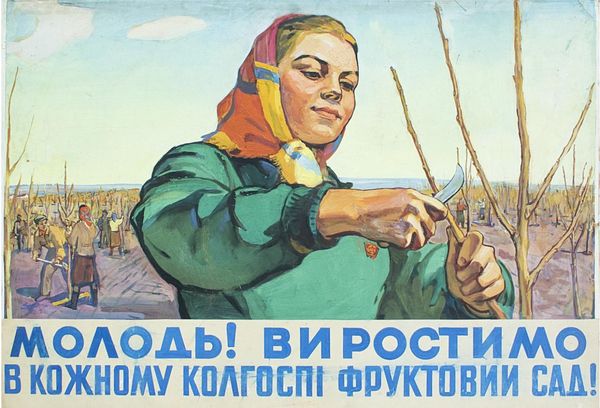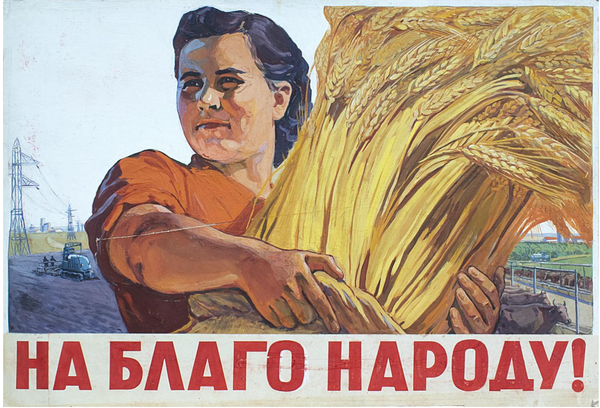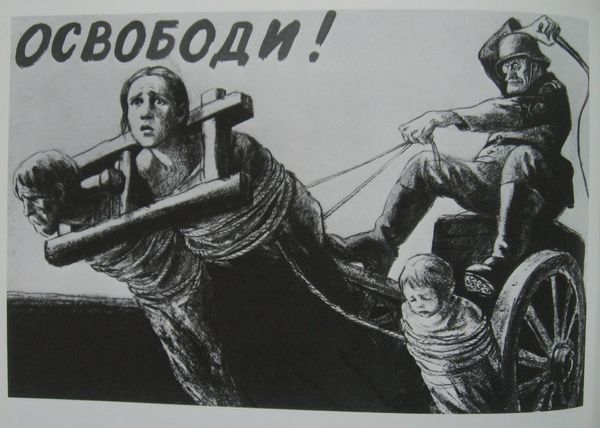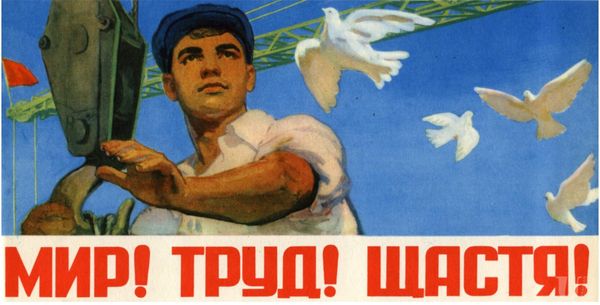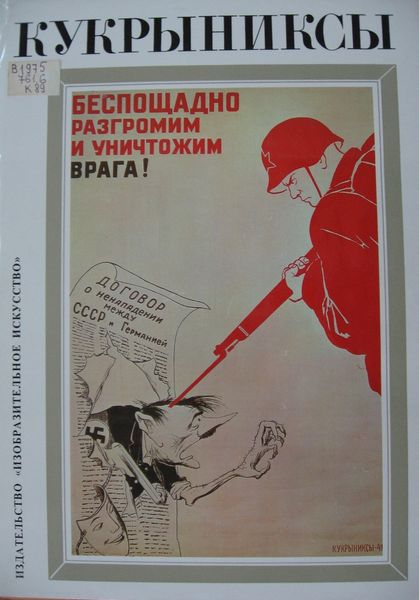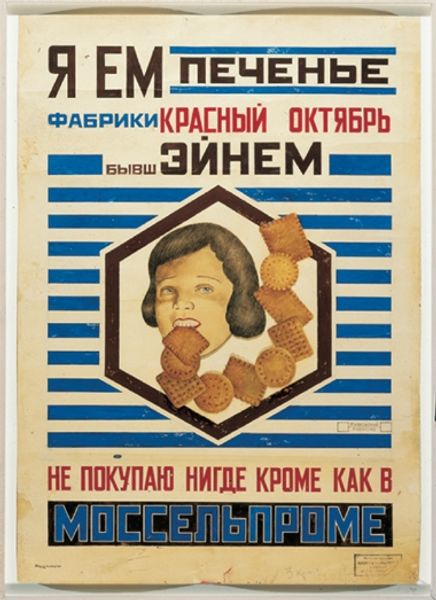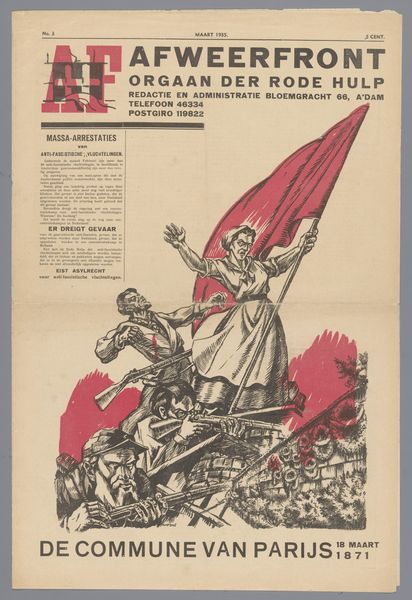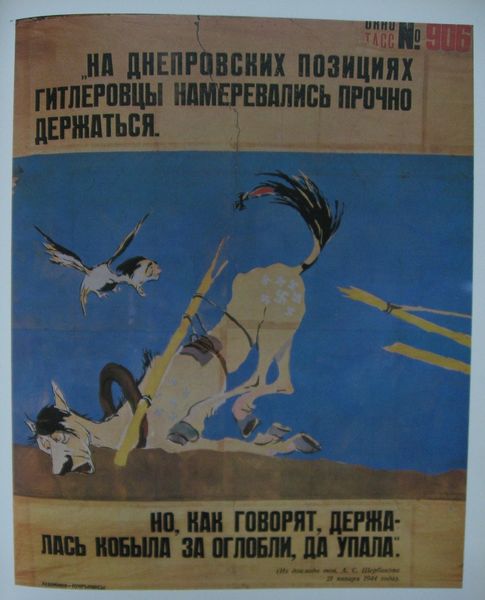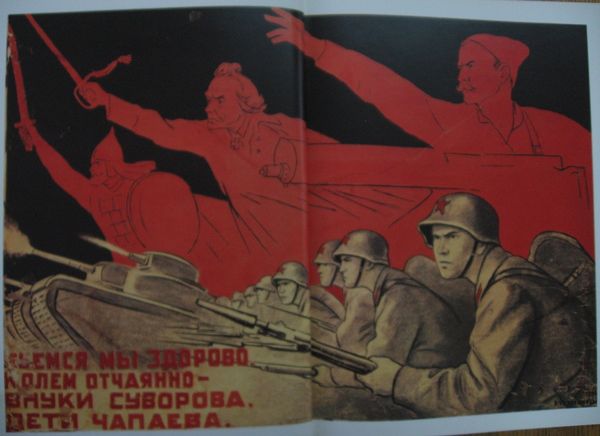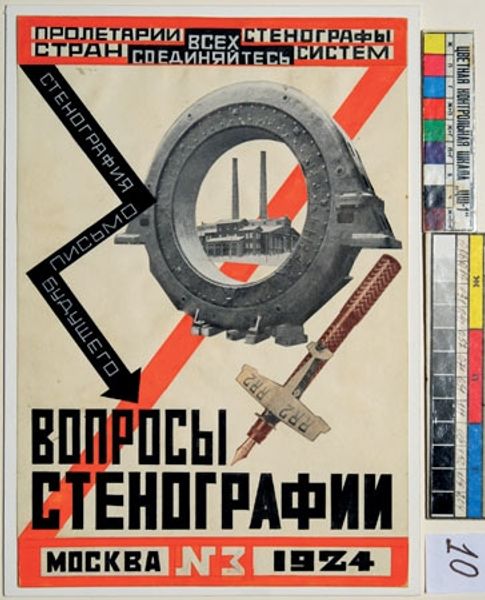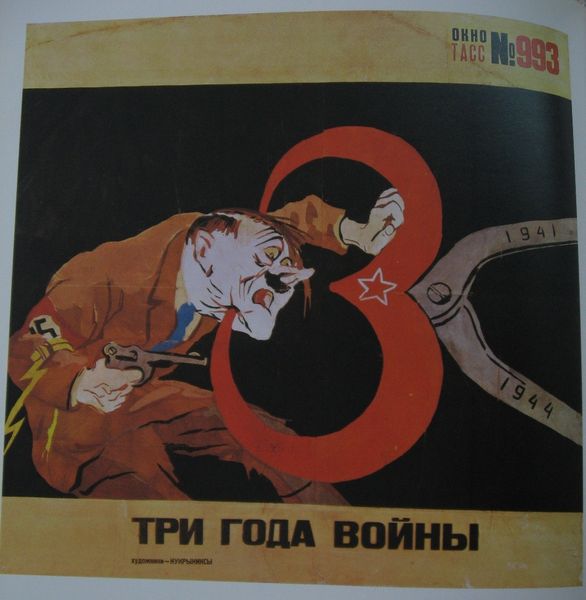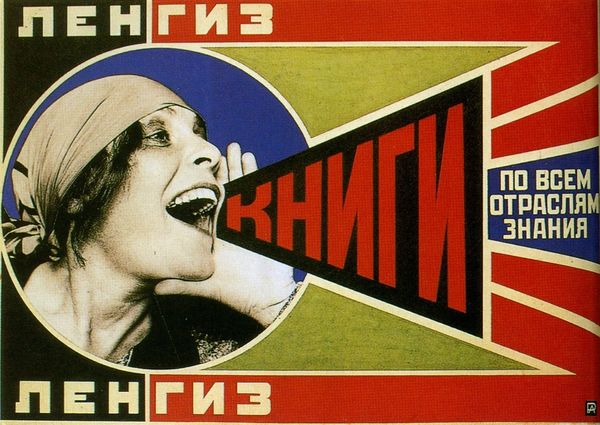
painting, acrylic-paint, mural
#
portrait
#
narrative-art
#
painting
#
landscape
#
socialist-realism
#
acrylic-paint
#
figuration
#
mural
#
regionalism
Copyright: Valerii Lamakh,Fair Use
Curator: Valerii Lamakh’s work, “We Multiply the Wealth of the Collective Farm by Hard Work,” produced around 1955, is a potent example of socialist realist painting. What immediately strikes you? Editor: The sheer heft of the harvested crop the woman is carrying. Its weight and texture seem palpable. It’s a statement about labor, right there. Curator: Absolutely. The central figure dominates the composition, framed against the receding landscape of the collective farm. Her gaze and smile project a sense of accomplishment, perhaps an idealized vision, toward a utopian horizon. We should also notice the repetition of forms: the harvested crops mirror those tied and standing in the distance. Editor: What I find interesting is how the materials of everyday farm labor become the subject. Acrylic paint, likely chosen for its durability and accessible production costs, captures the story. Also consider that this might be a mural which further speaks to accessibility and public display of socialist ideals. Curator: Indeed, it is no accident that the medium and style reflect and amplify the message. Notice how the artist constructs a clear visual language. The earthy color palette is grounded and stable while diagonal lines in the fields lead the eye towards the poster copy text, solidifying the intended path for the viewer’s gaze. Editor: And there’s an inherent tension, isn’t there? Between the idealised image and the reality of agricultural production; between “art” and “craft,” and their respective values within the political structure. Even the choice of acrylic subverts a kind of classic understanding about what ought to be painted. Curator: I agree; Lamakh invites us to unpack the construction of this heroic narrative through formal considerations of how composition and stylistic choices guide the viewer’s perception. Editor: Ultimately, the work provokes us to ask questions about labor practices and whether this represents more than propagandist intent. It presents not only an artifact, but it captures something essential about production during the period, blurring any preconceived boundaries we may have regarding aesthetic categories or labor’s place in Soviet identity-making. Curator: Well articulated. Viewing it through that lens gives us a nuanced view of this key moment in art history. Editor: Agreed, considering its making encourages me to consider who that period actually produced for.
Comments
No comments
Be the first to comment and join the conversation on the ultimate creative platform.
